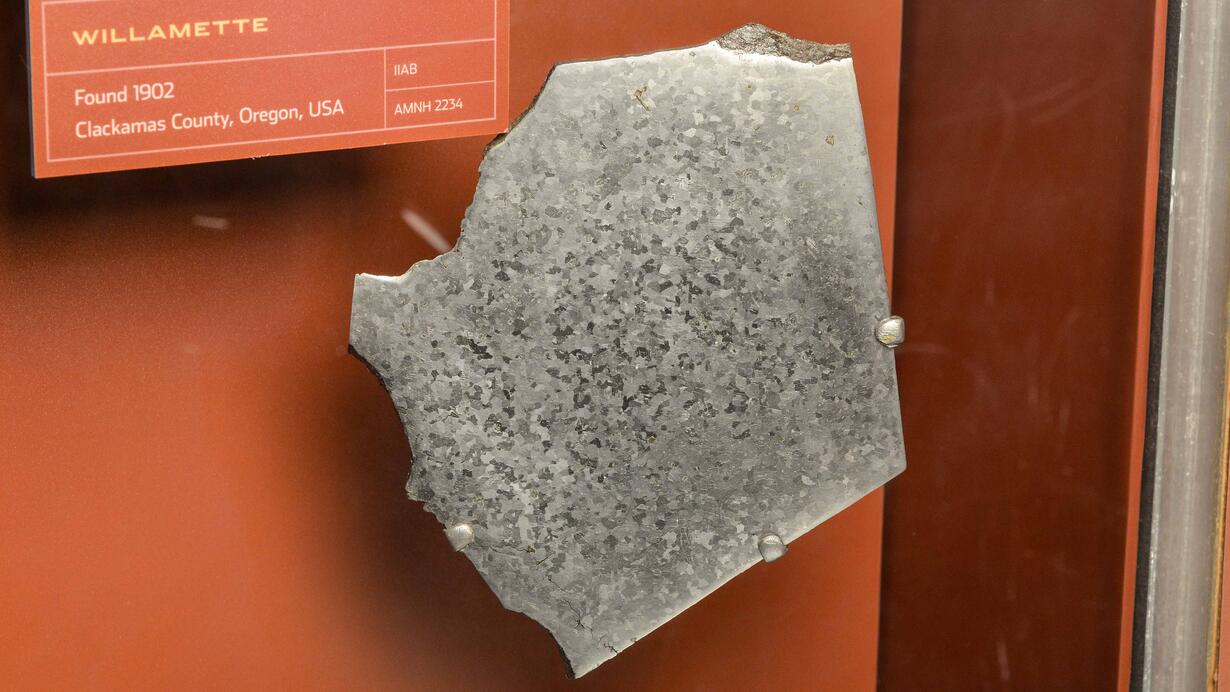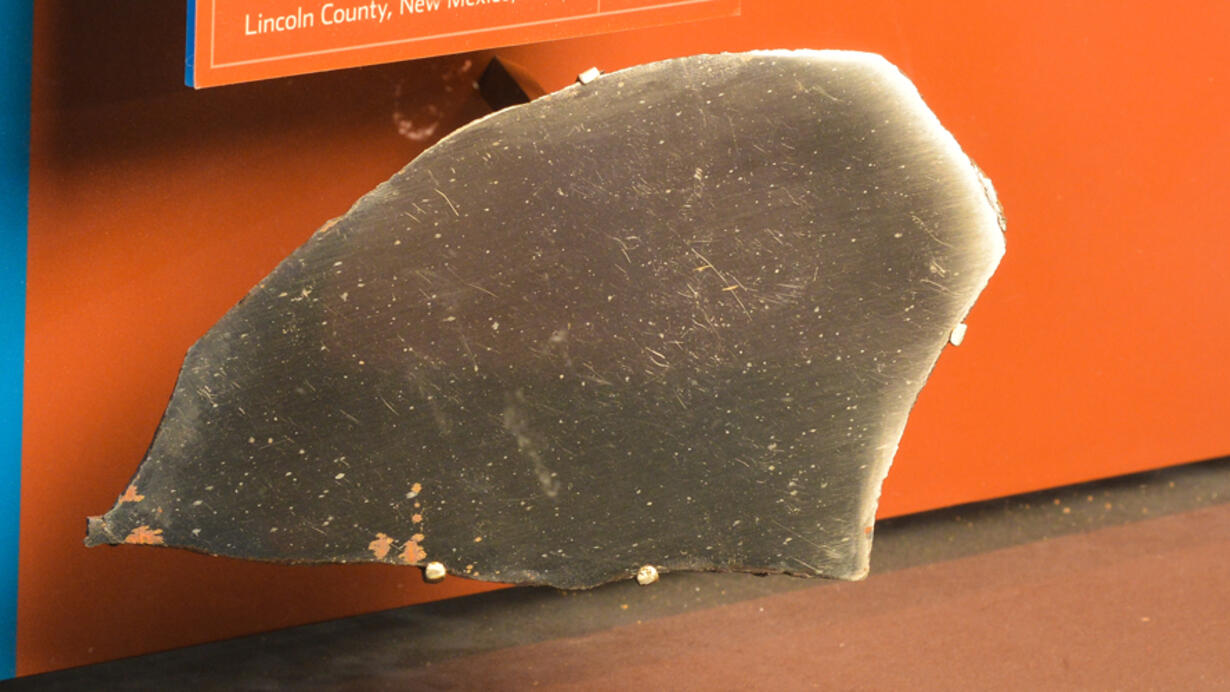Iron crystals
Part of Hall of Meteorites.

Crystals in Cross Section
The crystal structure in iron meteorites is three-dimensional, so the pattern looks different depending on how you slice it. These meteorites have been cut with a saw and polished flat to reveal the crystals in cross section.
The actual 3-D structure is made of numerous flat plates of the iron-nickel alloy kamacite. When molten iron and nickel first cool and harden in a planet's core, they form a different alloy, taenite. But as the solid taenite cools, plates of crystallized kamacite grow through it. After millions of years, when the metal cools so much that crystals stop growing, the finished pattern freezes in place.
Yenberrie
YENBERRIE
Found 1918
Northen Territory, Australia
IAB
AMNH 290
The Widmanstätten Structure
In the metal cores of partially molten asteroids, iron-nickel alloys crystallized in a distinctive pattern known as the Widmanstätten structure. This pattern is named after one of the first people to observe it some 200 years ago, Count Alois de Widmanstätten. The pattern forms only deep inside planetary bodies that take millions of years to cool. Iron never crystallizes this way on Earth's surface, so any metal showing this pattern on Earth is definitely from a meteorite.
The crystal patterns in iron meteorites range from very coarse to extremely fine. The thickness of the crystals in the pattern depends mainly on the amount of nickel they contain, and how slowly the metal cooled. With this information, one can estimate the size of the meteorite's parent body, because larger asteroids cool more slowly than small ones.
In This Section

Coahuila
Crystals Too Big to See
No crystal pattern is visible in Coahuila, because the entire meteorite is part of a single, immense crystal. Coahuila contains very little nickel, which enabled a single crystal of the low-nickel alloy kamacite to grow until it consumed all of the original taenite alloy. Meteorites like this are called hexahedrites.
COAHUILA
Found 1837 Coahuila, Mexico
IIAB
AMNH 216

Linwood
Coarse Crystals
In meteorites with the coarsest patterns, such as Linwood and Mount Joy, the crystals are not flat plates. When flat crystals run into each other and cannot grow any wider, they become thicker instead to fill the available space. This produces an irregular pattern.
LINWOOD
Found 1940 Butler County, Nebraska, USA
IIAB
AMNH 3789

Mount Joy
MOUNT JOY
Found 1887 Adams County, Pennsylvania,
USA IIAB
AMNH 92

Carlton
Medium and Fine Crystals
These medium- and fine-grained meteorites have much thinner crystals than the coarse-grained samples above. Finer patterns generally indicate higher nickel content, because nickel limits the growth of the kamacite crystals that produce the Widmanstätten pattern.
Finer crystals are also produced by faster cooling. Gibeon, for example, has smaller crystals than Owens Valley, even though it has slightly less nickel. The most likely explanation is that Gibeon cooled more quickly than Owens Valley—indicating that it came from a smaller parent body.
CARLTON
Found 1887
Hamilton County, Texas, USA
IIICD
AMNH 116

Gibeon
Look Closely
A dark band of iron sulfide marks the boundary between two sections of crystals that grew until they ran into each other.
GIBEON
Found 1836 Great Nama Land, Namibia
IVA
AMNH 210

Owens Valley
OWENS VALLEY
Found 1913 Inyo County, California, USA
IIAB
AMNH 2636

Willamette
Broken Crystals
Willamette once had a Widmanstätten structure similar to the one in Owens Valley. However, its crystals were reheated and recrystallized into new shapes. In this case, the heat came from collisions with asteroids in space. Other iron meteorites, however, were partially recrystallized on Earth when people used them as anvils.
WILLAMETTE
Found 1902 Clackamas County, Oregon, USA
IIAB
AMNH 2234

Tinnie
Crystals Too Small to See
Tinnie is an ataxite, meaning it has a very fine-grained crystal pattern. It cooled so quickly that the only crystals it contains are microscopic, as in ordinary steel. This mineral structure is more flexible and less breakable than iron with large crystals in it.
TINNIE
Found 1978 Lincoln County, New Mexico, USA
IVB
AMNH 4988